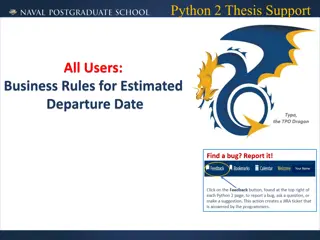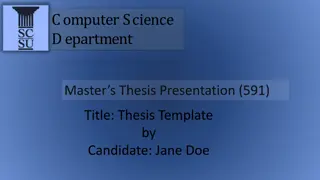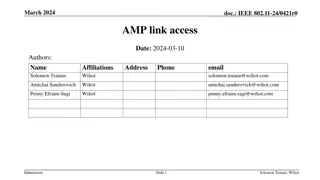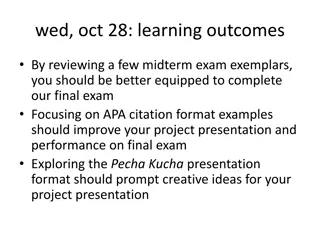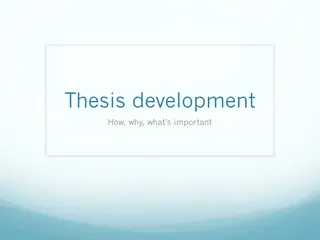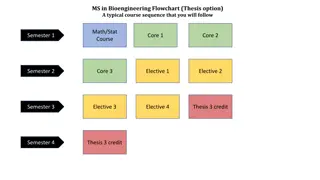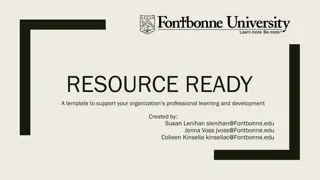
Overcoming Challenges in Agile Transition for Data Warehouse Projects
Explore the impediments faced during the transition from Waterfall to Agile methodologies in a backend Data Warehouse project. Focus on time-boxing testing efforts and its impact on software development cycles. Understand the importance of synchronization among multiple Scrum teams for successful Agile implementation at an enterprise level.
Download Presentation

Please find below an Image/Link to download the presentation.
The content on the website is provided AS IS for your information and personal use only. It may not be sold, licensed, or shared on other websites without obtaining consent from the author. If you encounter any issues during the download, it is possible that the publisher has removed the file from their server.
You are allowed to download the files provided on this website for personal or commercial use, subject to the condition that they are used lawfully. All files are the property of their respective owners.
The content on the website is provided AS IS for your information and personal use only. It may not be sold, licensed, or shared on other websites without obtaining consent from the author.
E N D
Presentation Transcript
GRAD 699-90- O-2018/LATE FALL GRADUATE THESIS IMPEDIMENTS IN TRANSITIONING TO AGILE: TIME-BOXING TESTING EFFORTS TANIYA DASGUPTA HARRISBURG UNIVERSITY GRAD 699-PMGT
INTRODUCTION Benefits of being Agile: Transparency Early & Predictive Delivery Focuses on Business Value Improves Quality
BACKGROUND This thesis focuses on the transitioning of a backend Data warehouse Project from traditional methodology to following Scrum an Agile software methodology. A critical and high volume project that involves adaptation of best practices of Agile across all teams as part of Program Integration function.
BACKGROUND ODS (Operational Data Store) deals with storing real time and historical data of student test scores. ODS applies different transformational and default rules on the data received from various upstream interfaces and passes it downstream for further validation and printing of report cards.
PROBLEM STATEMENT Transitioning from Waterfall to Agile methodology might be throttled with challenges when multiple scrum teams are involved. Agile framework solicits software development in time boxed iterations called Sprints.
PROBLEM STATEMENT Time boxing of all scrum ceremonies poses to be a huge challenge for new scrum teams. In order to successfully implement Agile practices at an enterprise level, all scrum teams must be synchronized in willing to put in equal level of effort.
PROBLEM STATEMENT Time boxing has negatively impacted requirements gathering, development and testing phases of a SDLC. There are sufficient bottlenecks witnessed in end to end testing phase including Dev to Dev testing, Integration testing, UAT and Unit testing of software products.
METHODOLOGY Overall approach: Conducted surveys (face to face interviews, group discussions) and a quantitative review. Survey was designed to gather various data on ways project teams are organized, mindset of team members and prevailing environment in the organization.
METHODOLOGY PART I First part mostly focuses on qualitative aspect of current distribution, organization and culture of teams as part of the PI function. This part focuses on building the As-Is analysis and process mapping that is currently followed.
METHODOLOGY PART II Second part relates to quantitative analysis of feedback from stakeholders on various roadblocks faced in the transitioning phase. This part focuses on how well members are adapting to time boxing and Sprint cycles of development.
RESULTS GROUP I RESPONSES 100 92 90 90 76 80 72 70 60 50 40 30 20 20 10 8 10 5 5 3 3 2 0 Roles Remotely Located Positive Experinece with Agile Scope of Improvement Leadership Senior Manager Team Leads
RESULTS GROUP I RESPONSES 100 90 90 80 72 70 60 50 40 30 20 10 10 5 5 5 0 Lack of Clarity in current Business Process Leadership Teams will adapt better as Teams mature Senior Manager Team Leads
RESULTS GROUP II RESPONSES 100 90 90 90 80 72 70 60 45 50 35 40 30 30 25 30 20 15 20 10 10 7 5 10 4 2 0 Roles Remotely Located Positive Experinece with Agile Business Analysts Scrum Masters Scope of Improvement Developers Quality Analysts
RESULTS GROUP II RESPONSES 95 95 100 86 90 80 75 75 80 69 65 70 60 57 60 50 36 35 35 40 30 30 20 20 10 2 0 Lack of Transparency Over allocation of Tasks Time Boxing of Testing Efforts Lack of Clarity in Current Business Process Developers Quality Analysts Business Analysts Scrum Masters
DISCUSSIONS Based on responses from both interviewed groups, there are mixed feelings about results that might ensue once the transition to Agile principles completes. It was witnessed that participants in leadership roles were more optimistic about future changes.
DISCUSSIONS The scrum teams were apprehensive on number of times requirements and business asks are circling back. Most scrum teams pointed out that when Agile methodology is introduced in this ambiguous mess of business processes it is leading to development of faulty and error prone software enhancements.
DISCUSSIONS Time boxing of software testing effort imposes critical restrictions on coordination across teams. This is leading to multiple pushbacks, miscommunication and resentment across teams. Final outcome is a software or enhancement delivered as product that has not been passed by Quality Analysts after thorough end to end integration testing efforts.
CONCLUSION Grey areas and possible redundancies in business processes requires to be identified and then worked upon. Agile methodology should then be strongly implemented, standardizing all scrum ceremonies across scrum teams can be one option. An Agile coach might be appointed to facilitate all scrum teams to a standardized set of scrum rituals where each team will be introduced to same set of norms.



